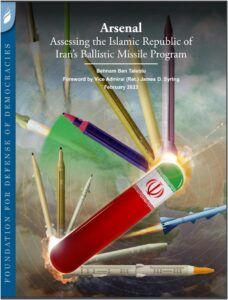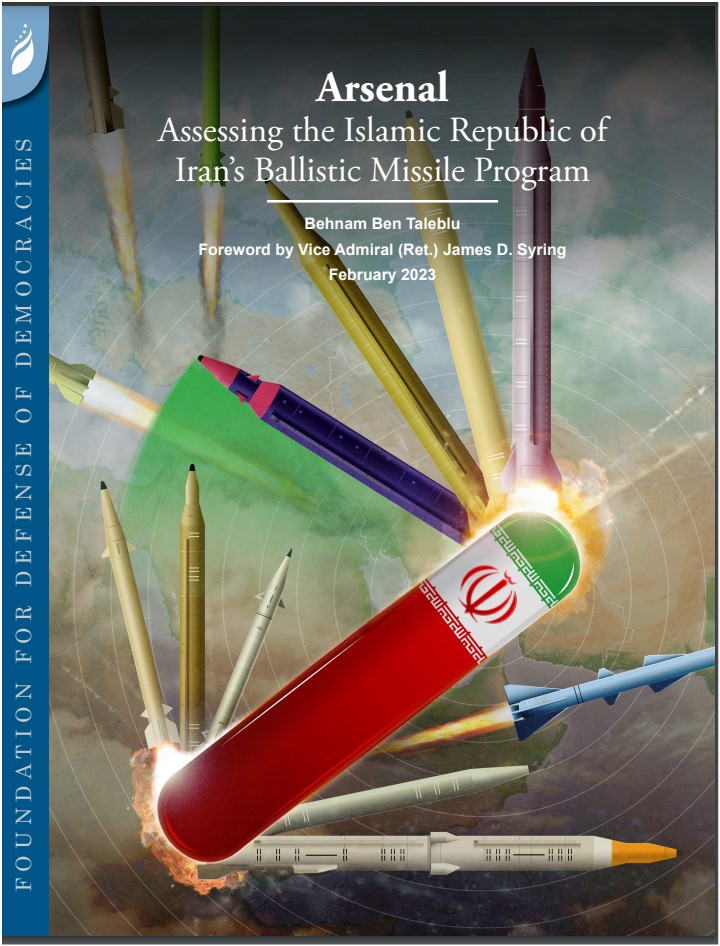
Behnam Ben Taleblu Foreword by Vice Admiral (Ret.) James D. Syring February 2023
Iran’s ballistic missile program benefits from sustained elite backing. The program was established by the Islamic Revolutionary Guard Corps (IRGC), the ideological military that exists alongside Iran’s conventional forces. The missile program is now underwritten by a broad swath of government-connected defense contractors, enabling the procurement, production, and proliferation of missile systems and associated technologies or materials.
PATTERNS OF FORCE EMPLOYMENT: Recent Iranian military drills (such as Great Prophet 15 and 17) have seen employment of loitering munitions, also known as suicide or kamikaze drones, against targets that were subject to ballistic missile attacks.
WARHEADS: Different warhead types and shapes can suggest different payloads. They also reflect the regime’s efforts to make its missiles more aerodynamic and stable upon re-entry. Warhead advances can be seen with respect to separating warheads and maneuverable RVs; the latter can be found on the Qiam-2, Khorramshahr-2, and Emad missiles. Iranian warheads can be unitary or configured to carry submunition payloads. The diversity of warheads reflects the diversity of missions assigned to Tehran’s various missiles, as well as Iran’s progress in design and engineering. Triconic warheads have a lower radar cross-section and higher re-entry speeds. While some scholars assert that the triconic shape of the Ghadr and Qiam-1 warheads could be an indicator of their potential nuclear use.
SOLID-PROPELLANTS: Solid-propellant missiles require less preparation time prior to launch and are more road mobile than liquid-fuel missiles. These advantages make solid-propellant missiles less susceptible to pre-emptive, or “left-of-launch,” strikes. Iran has made significant progress on solid-fuel systems, as seen in variants of its Fateh-family missiles and in its production of solid propellant motors for the Qased and Zuljanah SLVs. Iranian officials have commented on the role shorter-range solid-propellant systems will play in phasing out their Scud-based SRBMs, though it is unclear if Tehran is phasing out the latter because of inferior precision and age or because of the challenge of producing liquid-fuel motors.
RANGE: Iran’s SLV program offers Tehran ways to skirt the self-imposed 2,000-kilometer range cap and work towards developing an IRBM and ICBM capability that could one day be used to threaten the European continent or U.S. homeland.
SURVIVABILITY AND MOBILITY: Most, if not all, of Iran’s SRBMs and MRBMs are mobile, which increases survivability. The regime also continues to develop new underground missile depots complete with transportation and firing systems, such as a new missile train that fires Emad missiles on an automatic clip, as unveiled in November 2020.




